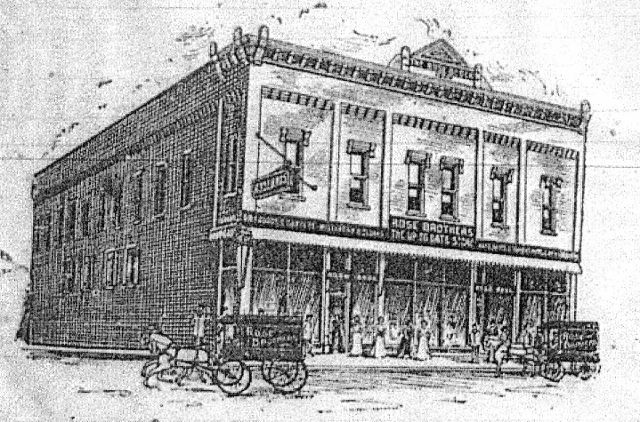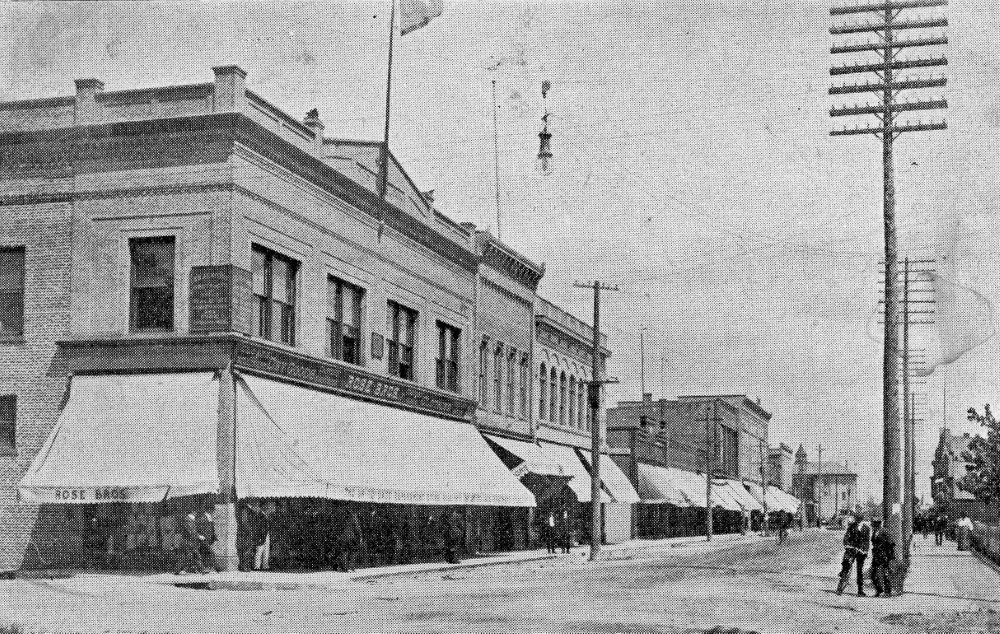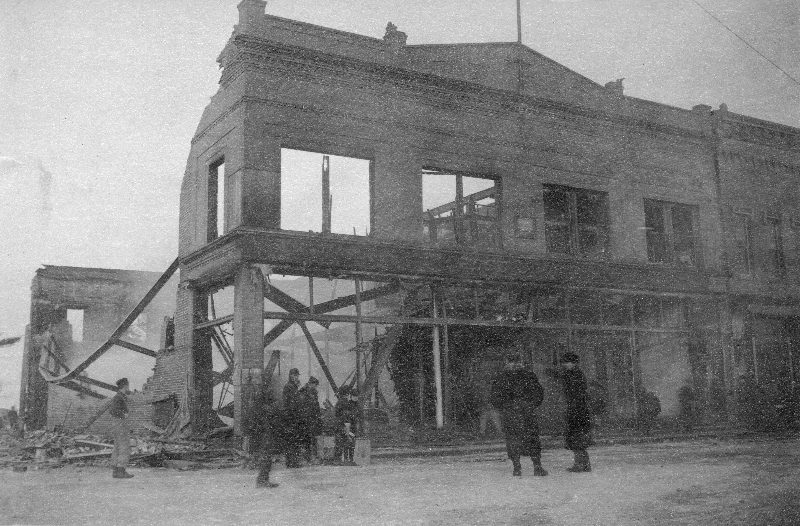
The Rose Brothers first store built on the corner of Oak and Cedar Streets (1900-1903).
Manistique merchant Harry Rose was born in Russia in February of 1865, where the Tsar’s treachery and authority knew no limits. Impressed by his older brother’s glowing letters about unlimited opportunity in America and freedom from religious persecution, he immigrated to the United States. Rose settled first in Marquette, Michigan in 1884, joining his older brothers, Leo and Jacob. He spent his first eight years in America working as a clerk in his brother Jacob’s store. During these years he became fluent in English as a second language, to go along with his native Yiddish.
Harry and his brother Leo, relocated to Manistique, Michigan in 1892. Here, they established a clothing and “gents furnishing” store in what was then known as the “Coon building” on Oak Street. With the rapid expansion of their business, the brothers erected a larger brick building on Oak Street next to the Barnes Hotel. The new Rose Brothers building housed the largest sales room in the city.
By 1900, the Rose Brothers’ business had once again outgrown their building. They purchased real estate on the corner of Oak and Cedar Street and built a large two-story department store, 60 x 125 feet. The grand opening was held on the first day of November, 1900. Before the building was finished, Leo Rose withdrew from the partnership, but by mutual agreement the new firm continued under the name of “Rose Brothers.” The store carried a large stock of men’s and women’s clothing in the most up to date fashions, and was one of the largest in the Upper Peninsula. Popular with visitors and townspeople alike, sales soared.
All went well until January 5, 1903, when fire caused by an overheated pipe from the wood furnace, completely destroyed the building and its contents. Rose estimated his monetary loss from the fire at $20,000. This included the value of the building and his stock not covered by insurance. Despite this severe setback, Rose vowed to rebuild in the spring. Such was his faith in the eventual future success of his enterprise.
The new Rose Brothers store was erected during the spring and summer of 1903. It was the same size as the one destroyed by fire earlier in the year. The upper floor of the new department store housed 12 apartments, each with a window facing the street. The confidence of Harry Rose in his business venture seemed justified, as residents of Manistique continued to patronize his magnificent department store.

The Rose Brothers second store built on the corner of Oak and Cedar Streets (1903-1906).
On the day after Christmas, 1906, the Rose Brothers store closed at noon. The building was filled with a large stock of sales goods, including several lots of clothing recently procured in preparation for the spring sales. It was 2:00 in the afternoon when one of the tenants on the second floor detected smoke and sounded the fire alarm. By the time the fire department arrived on the scene, the smoke on the first floor was so dense that the firefighters were unable to reach the source of the blaze in the basement. The firemen flooded the first floor with thousands of gallons of water in the futile hope that it would flow down to the source of the blaze in the basement. This strategy failed miserably. By 6:00 p.m. smoke and flames were seen coming through the roof and fire fighting efforts turned toward saving adjacent buildings.

The burned out shell of Rose Brothers Department Store on the corner of Oak and Cedar Streets is pictured here on December 25, 1906.
Rose vowed to rebuild yet again, but his losses could not be recouped in Manistique. By 1909 Rose and his family had moved to Chicago where he owned a highly successful clothing manufacturing company. Patrick McNamara purchased the burned-out shell of the Rose Brothers store and built the structure that stands there today. The south half of the new building was originally occupied by McNamara’s Star Buffet Saloon with a bottling works in the rear, while the north half housed Moses Winkleman’s Clothing and Dry Goods.
See the “About Us” tab at the top of the page to learn about the historical society’s new museum fund drive.
